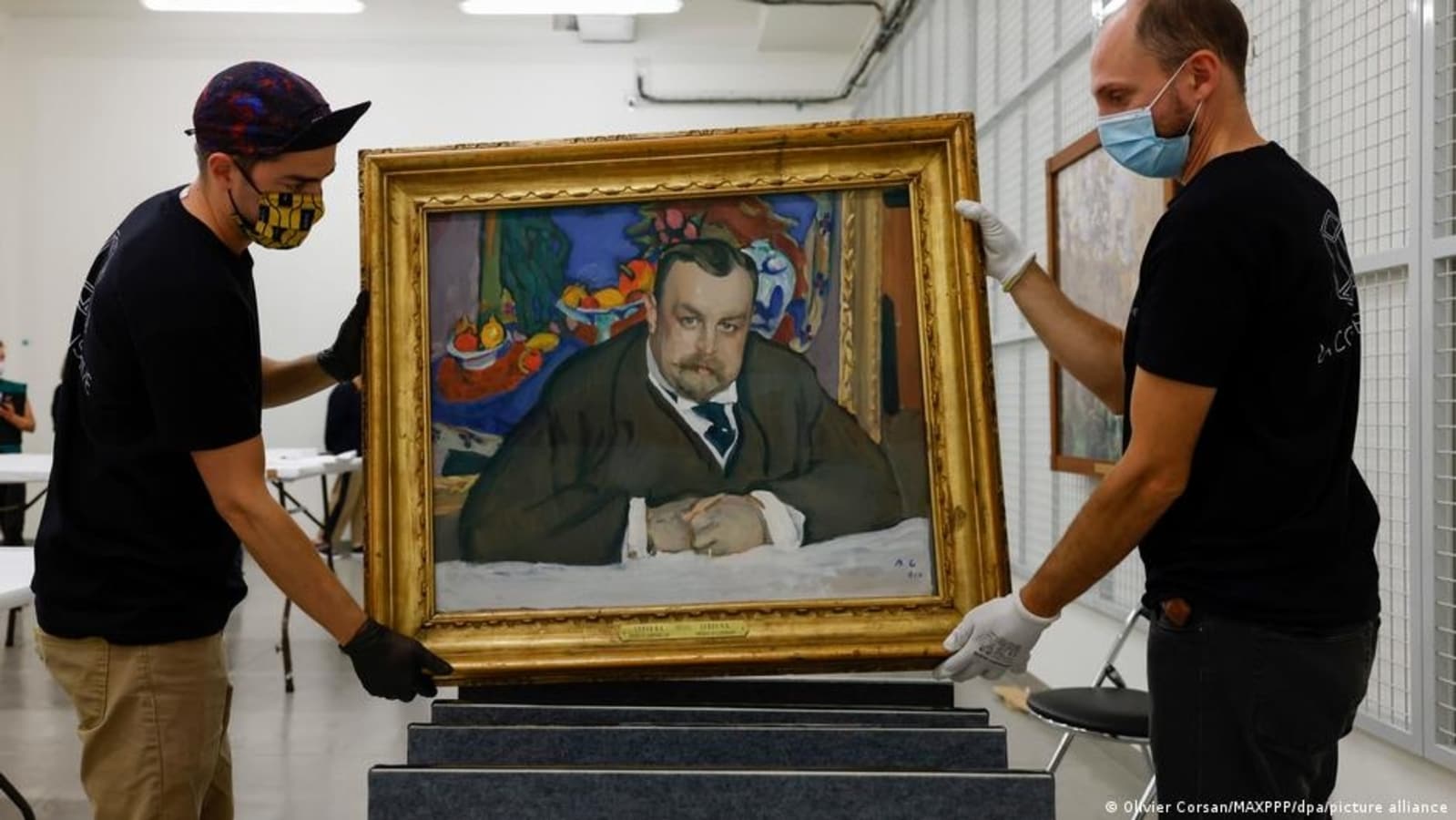[ad_1]
Picasso, Gauguin, Renoir, to name but a few — the Morozov Collection includes about 200 works by some of the most famous European painters, as well as important works by Russian artists.
For the first time, this extraordinary collection was shown outside Russia, in a blockbuster exhibition held in France.
By early February, more than 1 million people had already visited “The Morozov Collection: Icons of Modern Art,” the show held at the Louis Vuitton Foundation museum on the outskirts of Paris.
The exhibition was extended through April 3, but as it now ends, the French and Russian curators face diplomatic and logistical problems: How will they return the artworks to the three Russian museums where they belong, the State Hermitage in St. Petersburg, the Pushkin State Museum of Fine Arts, and the Tretyakov State Gallery in Moscow?
After Russian troops invaded Ukraine, most European countries banned Russian airlines from entering their airspace, and Russia imposed flight bans on the West.
ALSO READ | How Ukrainian cultural heritage is being preserved online
War makes return difficult
Returning them by truck would also be complicated, the Louis Vuitton Foundation said.
In cooperation with the respective Russian institutions, they are examining what to do if there is “a problem” crossing the border, said Jean-Paul Claverie, special adviser to Bernard Arnault, chairman of the Louis Vuitton Foundation, in an interview with the New York Times.
A “road map” has been drawn up for the return of artifacts currently in Europe, Russian Culture Minister Olga Lyubimova said at a press conference this week, but without giving details.
Both sides said the works might initially remain on the premises of the Louis Vuitton Foundation for safekeeping. The safety of the paintings is the top priority, they said.
A storied collection of masterpieces
The paintings are part of a historic private collection. At the turn of the last century, the brothers Mikhail (1870-1903) and Ivan Morozov (1871-1921) purchased works by important European artists, including Gauguin and Cezanne.
When Russia’s Tsarist regime collapsed in 1918, the collection was nationalized.
Initially, it was to become part of the Museum of Modern Western Art, but Stalin, who despised European art, had it closed in 1948.
The works were distributed among Moscow’s Pushkin Museum and the Hermitage in Saint Petersburg.
For economic reasons, the Soviet state also sold several works, including Van Gogh’s “Café de Nuit,” which went to Yale University, and Cezanne’s “Portrait of Madame Cezanne,” which now belongs to the Metropolitan Museum in New York).
The Paris exhibition, which opened in September 2021, was celebrated as a major diplomatic event, with both French President Emmanuel Macron and Russian Culture Minister Lyubimova in attendance.
Cultural dilemma on both sides
The Morozov Collection is not the only show that has organizers wondering how and when the works can be returned to Russia.
A Carl Faberge exhibition at the Victoria and Albert Museum in London that runs until May 8 includes 13 exhibits from Russian museums — a Faberge egg Vladimir Putin donated to the State Hermitage in St. Petersburg, as well as items owned by the Link of Times Foundation, whose founder Viktor Vekselberg is on the British government’s sanctions list.
Russian museums face similar problems.
The “Diversity United” exhibition at Moscow’s Tretyakov Gallery, a Germany-France-Russia collaboration, was halted.
German President Frank-Walter Steinmeier recently withdrew his patronage for the show organized by the Bonn-based Foundation for Art and Culture, headed by Walter Smerling. “In this case, our plan to build bridges with the help of art and beyond political difficulties did not work,” Smerling told DW, adding he fears that “for the foreseeable future, exhibitions of contemporary art have no chance to take place in Russia under conditions of lacking freedom and militant action.”
Given the tragedy currently unfolding in Ukraine, the problems in the art world may seem of little relevance. But until the war, cooperation projects between Russian and European museums were seen as an important diplomatic pillar.
[ad_2]
Source link

